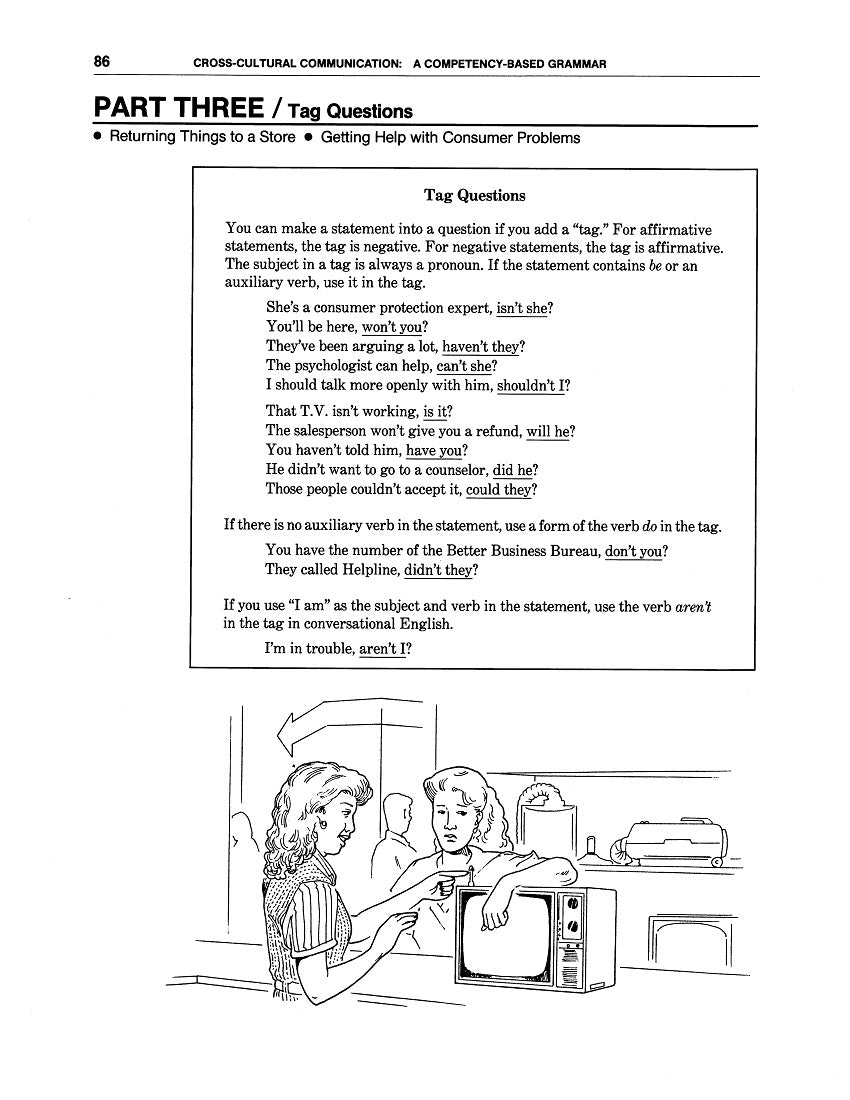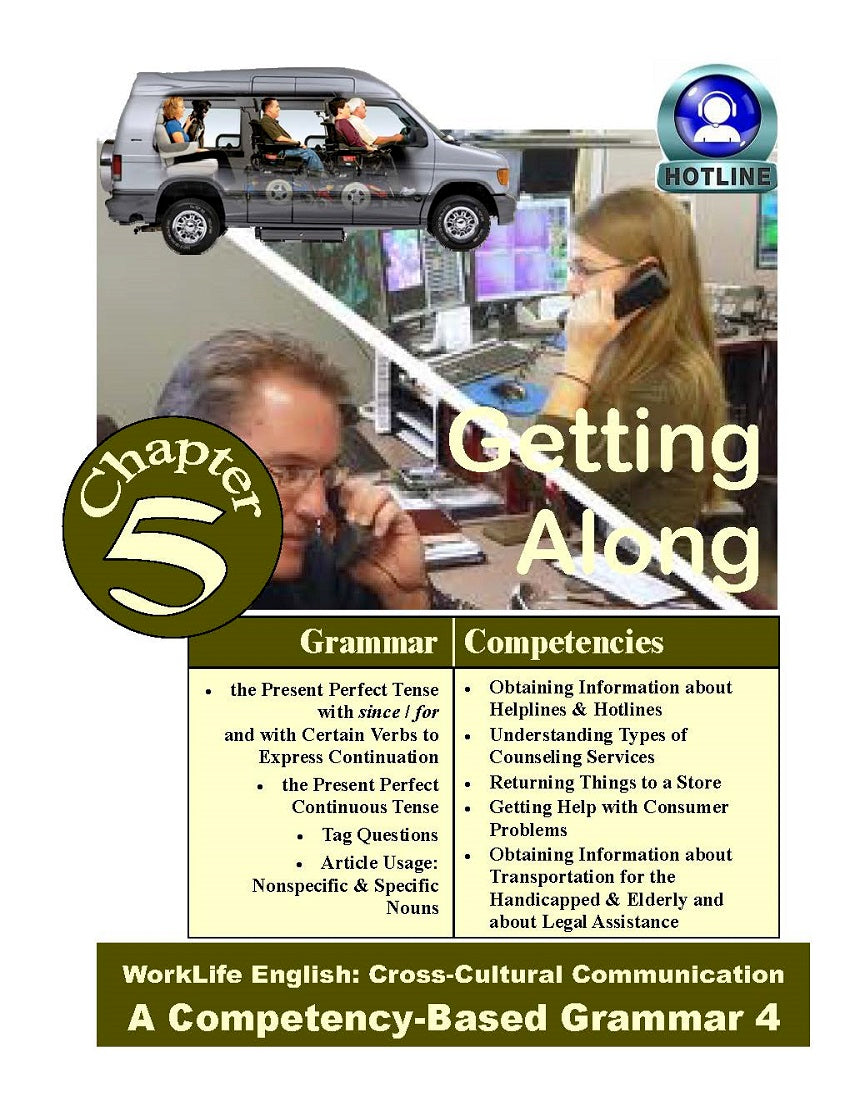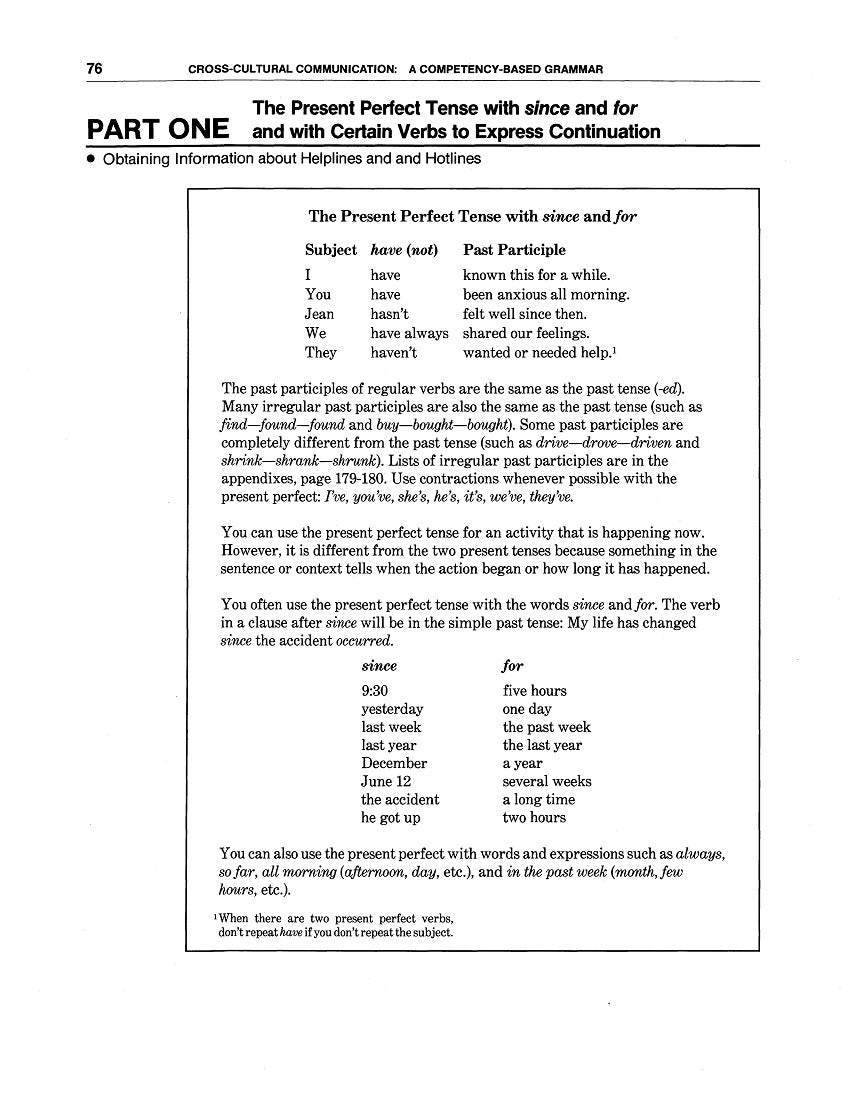1
/
of
6
Work/Life English
D-13.03 Use Present Perfect (Continuous) Verb Phrasing (with Since, For) to Express Continuation
D-13.03 Use Present Perfect (Continuous) Verb Phrasing (with Since, For) to Express Continuation
Regular price
$4.00 USD
Regular price
Sale price
$4.00 USD
Unit price
/
per
Pre-Test + Parts One Through Three of Chapter 5: the Present Perfect Tenses (“Getting Along”) of WorkLife English Grammar 4: Cross-Cultural Communication, pages 73-88
16 pages
Who It’s For: Intermediate (& Above) Teachers, Helpers, & Language Learners Starting to Refine Their Use of Verb-Tenses & Aspects
Why It’s Useful: When language learners first attempt to tackle the Tense & Aspect system of English verbs, mastering just the “Simple Tenses” may suffice. Later on, to improve the effectiveness of their speech / writing, they’ll get the of Action Verbs. And eventually, for fluency and style, they’ll need “Perfect Forms,” which indicate completed, or "perfected," actions or conditions. For these, it makes sense to begin in the “Present Time Frame,” postponing the Past & Future Perfect. This Download offers a good start.
What You’ll Do:
[1] In the page 73 Chapter Opener, look at the visual. Peruse the forms or patterns relevant to the Grammar: Present Perfect (Continuous)—as well as the Competency-Based Content (Helplines & Hotlines, Counseling Services, Help with Consumer Problems). In the Chapter 5 Preview on pages 74-75, tell what problematic situations the pictures bring to mind. Complete and check “How much do you already know?”.
[2] In Part One on pages 76-80, learn how to use “The Present Perfect with since & for to Express Continuation.” Contrast verbs suggesting “onset of action”—like realize, become, get—with verbs like know, be, have, which connote “continuation.” When doing and checking Exercises A-D, consider the visualizing Time Charts.
[3] Part Two on pages 81-85 focuses on forms and uses of The Present Perfect Continuous. Study the pedagogy; compose statements, questions, and answers; Tense, and contrast this “doubled aspect” tense with the Present Perfect.
[4] With Part Three on pages 86-88, you can supplement what you can already do with the Present Perfect (Continuous) vs. The Simple Past by adding “Tag Questions” to your repertoire. And since all grammar instruction in the Chapter is in the context of “Getting Along by Getting Help,” you can apply your new abilities to just that purpose in real life.
Couldn't load pickup availability












